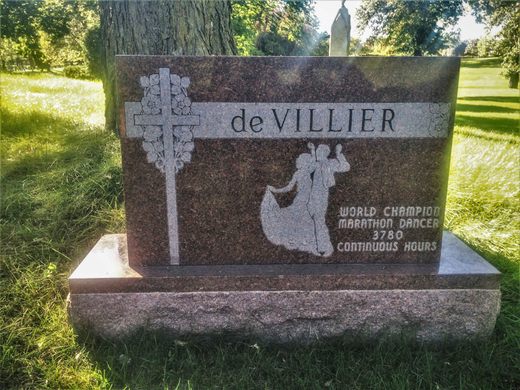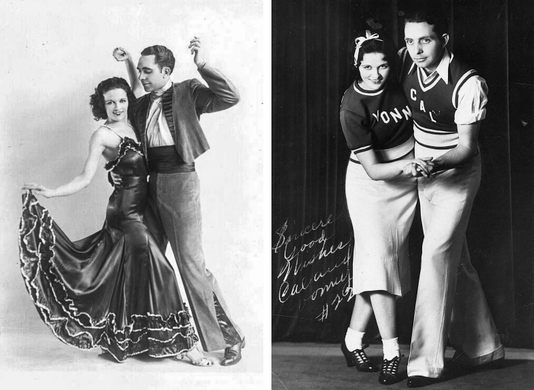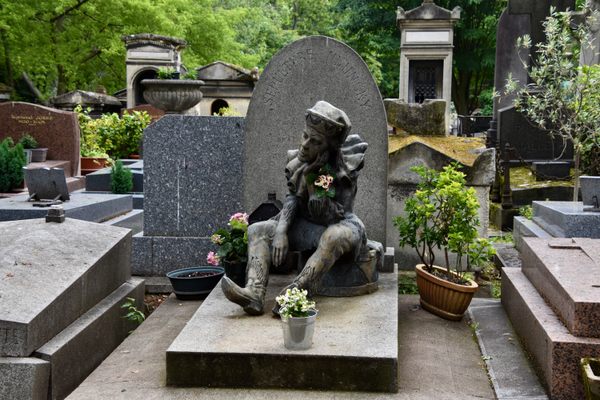Grave of Callum DeVillier
For posterity, a singular achievement: 3,780 hours of dancing.
From Snickers inventor Franklin C. Mars to 1960s ukulele-playing singer Tiny Tim, Minneapolis’s Lakewood Cemetery is the eternal resting place for many of the city’s most well-known names.
Among them is a name less well-known, but with a surprising distinction: “DeVillier,” reads a pale red tombstone in Section 11, tucked behind the crematorium but clearly visible from the graveyard’s winding road. “World Champion Marathon Dancer. 3780 Continuous Hours.”
In June 1933, after dancing for over five months, DeVillier and his partner Vonnie Kuchinski were the last contestants standing at a Massachusetts dance contest. During the Great Depression, dance marathons were an exploitative entertainment racket that dominated dance halls and auditoriums in towns and cities across the United States.
Those who could afford the small entrance fee watched as competitors desperately swayed across the dance floor, slept in their partners’ arms, and did daily tasks such as eating and shaving while in motion. For struggling rural people like DeVillier, who grew up above his parents’ candy shop in the small Minnesota town of Lanesboro, dancing in a marathon could mean months of food and shelter, with the possibility of a cash prize. (The reward for this five-month slog was $1,000.) The practice was eventually rebranded as a “walkathon,” presaging today’s common fundraising events.
DeVillier went on to run a hair salon in the Minneapolis suburb of St. Louis Park. It seems his big victory in Massachusetts was his last, but he was clearly proud of it—the tombstone, it is said, was his own design.















Follow us on Twitter to get the latest on the world's hidden wonders.
Like us on Facebook to get the latest on the world's hidden wonders.
Follow us on Twitter Like us on Facebook